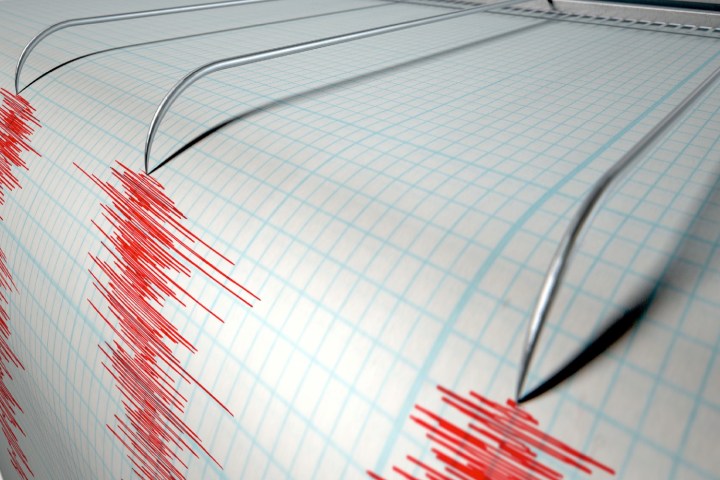
For the experiment, earthquakes were modeled by the researchers using two large blocks of steel, which were put under stress. This resulted in them rubbing against one another like tectonic plates on the Earth’s surface. The movement released energy in the form of seismic waves — which was then analyzed by the team’s artificial intelligence.
“We discovered that an artificial intelligence can learn to discern a very specific pattern in the sound emitted by the fault before it ruptures,” Bertrand Rouet-LeDuc, one of the researchers on the project, told Digital Trends. “This pattern tells us how much stress the fault is undergoing. Once this AI has been trained on an experiment, it can be used to make very accurate predictions of the time remaining before the next laboratory earthquake, for the same experiment but later on, or even for a different experiment. Concretely, even right after a laboratory earthquake, the AI can listen to the experiment for a very short duration, and make an accurate prediction of the time remaining before the next quake.”
There is plenty of discussion in the geoscience community regarding whether the prediction of earthquakes is actually possible, or whether quakes are random and therefore cannot be predicted. Rouet-LeDuc observes that the fact that the work of the team in lab conditions provides hope that real world earthquake prediction may, in fact, be possible. It won’t be easy, though.
“We started working on real Earth data, and there are many additional challenges,” Rouet-LeDuc said. “In particular, the ambient noise picked by the seismometers that comes from human activity, oceans, or the weather is an issue. Another challenge is that we’re also picking up signals from many faults close to the fault that we study, and these signals are mixed with the ones we are interested in.”
Despite this, the researchers describe the preliminary results as promising. “In any case, we are certain we will learn far more about the friction within real faults, and that will only help us understand and characterize [them],” Paul Johnson, another researcher on the project, told us.
A paper describing the research was recently published in the journal Geophysical Research Letters.
Editors' Recommendations
- These 7 AI creation tools show how much AI can really do
- This is how Google’s internet-serving Loon balloons can float for nearly a year
- New self-driving car algorithm keeps you safe by constantly predicting doom
- Online learning can’t replace classrooms. Microsoft Teams wants to change that
- MIT says it can tell how healthy you are by analyzing your dishwasher


